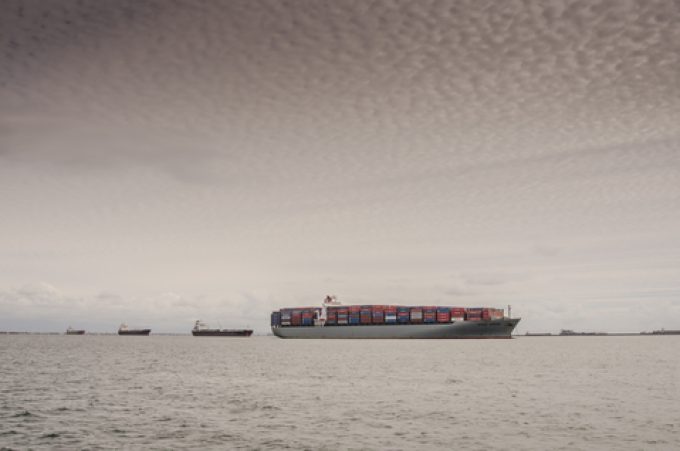NYK signs up for direct air carbon capture scheme
Direct Air Carbon Capture and Storage (DACCS), derided as one of the least efficient possible ...
FDX: WAITING FOR THE SPINHON: BREAK-UP ALLUREDSV: BREACHING SUPPORTVW: BOLT-ON DEALAMZN: TOP PICK DHL: STRONGER TIESXPO: TOP PICKDHL: HIT HARDWMT: NEW CHINESE TIESKNIN: NEW LOWS TSLA: EUPHORIAXPO: RECORDTFII: PAYOUT UPDATE
FDX: WAITING FOR THE SPINHON: BREAK-UP ALLUREDSV: BREACHING SUPPORTVW: BOLT-ON DEALAMZN: TOP PICK DHL: STRONGER TIESXPO: TOP PICKDHL: HIT HARDWMT: NEW CHINESE TIESKNIN: NEW LOWS TSLA: EUPHORIAXPO: RECORDTFII: PAYOUT UPDATE

The ability of container carriers to levy high demurrage charges on shippers is holding back progress solving one of the biggest shipping bugbears – the “hurry-up-and-wait” scenario, in which box ships increase speed to catch up on schedules, only to end up anchored outside their destination port waiting for a berth.
Some estimates conclude this is increasing container shipping’s CO2 emissions by 15%.
Ships can only unload cargo when there are berthing slots allowing them to dock, and the inverse square law means they can realise outsize reductions in fuel consumption and emissions by sailing slower to the destination if there are no berth available.
But flying in the face of decades of insistence that the problem is a ‘low-hanging fruit’, neither the application of VSAT broadband, nor digitalisation, machine learning or AI have been able to make so-called ‘smart-steaming’ – which could be achieved with a telephone call – a reality.
Instead, ‘hurry-up-and-wait’ stubbornly persists, with Linerlytica showing that queues of more than a dozen vessels are routine at the world’s largest ports.
Finland’s Napa is the latest company to attempt to tackle the issue, with its new project, Napa Studio.
Napa CEO Mikko Kuosa made it clear that technology, in this case, is not the answer. He explained: “There are conflicting interests to solve this. There are incentives [to hurry-up-and-wait] built into contracts. There have been so many efforts during the last ten, 15 years to solve this.”
He told The Loadstar the problem was that carriers were able to levy D&D charges which may be well in excess of the fuel efficiencies to be gained from smart-steaming.
“Often, demurrage can be more profitable than doing normal business,” he said.
In its attempt to address the problem, Napa has “brought together shipyards, owners, classification societies, technology providers, but also stakeholders from the legal, commercial and contractual sides,” Mr Kuosa said.
“There needs to be a solution that neutralises these conflicting interests, so that shipping, from a contractual point of view, would be aligned toward this decarbonisation market.
“To share the benefit to all the relevant stakeholders – that is the key to solving this,” he added.
Comment on this article
Daniel Caso
September 21, 2024 at 9:19 amExcellent article! I personally I ve been raising this subject for years including at international bodies like UN-ECLAC without very much attention to this double game issue. What I have noted was that S. American shippers were quite afraid to raise complains on these matters in view of a highly concentrated an vertically integrated shipping industry that at regional level has not real effective government regulation. At least in in the old conference times, there were national flags and a UN code of conduct.